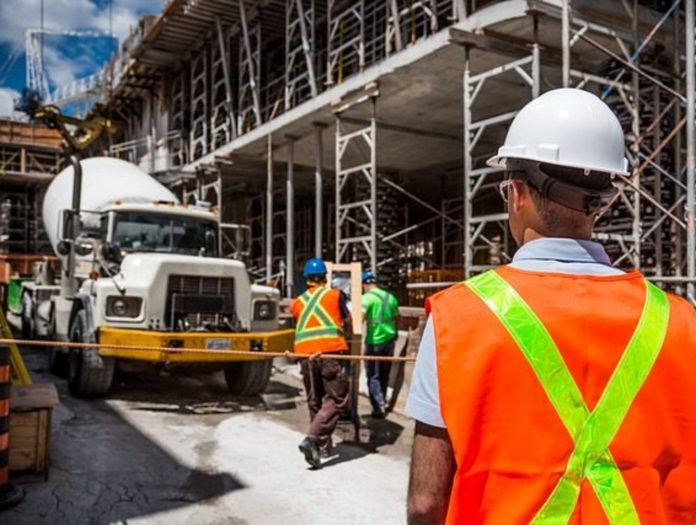Construction sites are complex environments with numerous potential hazards that may cause injuries and damage. Ensuring the safety of workers is paramount in the industry, and it requires a combination of clear communication, training, proper equipment, and adherence to regulations. So, let’s examine what safety guidelines for construction workers every construction site should have, covering key aspects that contribute to a secure working environment.
Clear signage and communication
Clear signage is the first line of defense against accidents on a construction site. Properly placed signs communicate important information, warn of potential dangers, and guide workers safely. Signage should include warnings about specific hazards, designated safety zones, emergency exits, and the location of first aid facilities. Moreover, conduct regular inspections, at least once a week, and update signs to ensure they remain visible and accurate.
It is equally crucial to communicate verbally with workers, especially when changes occur. Hold regular safety briefings to keep everyone informed about potential risks, ongoing projects, and emergency procedures. Maintaining a culture of open communication and awareness at construction sites can significantly reduce the likelihood of accidents and errors.
Safety training and preventive measures
Partnering with safety professionals, like Zokal Safety Australia, and investing in comprehensive training for construction workers is a fundamental step in accident prevention. Workers should be well-versed in the specific risks associated with their tasks and trained on how to use safety equipment effectively. Regular drills for emergencies, such as fires or collapses, can ensure that workers respond calmly and efficiently in crises.
Additionally, preventive measures, such as conducting thorough risk assessments before commencing work, are integral to a proactive safety approach. Identifying potential hazards in advance allows for the implementation of measures to mitigate risks, contributing to a safer work environment overall.
Understanding the importance of safety gear
Construction workers must understand the critical role of safety gear in protecting themselves from potential harm. Personal Protective Equipment (PPE) like hard hats, safety glasses, gloves, and steel-toed boots are not optional but essential components of every worker’s attire. Furthermore, construction workers should be educated on the specific purpose of each piece of safety gear and how it contributes to their well-being.
Employers should provide and enforce the use of appropriate safety gear, conducting regular checks to ensure compliance. It’s their responsibility to have a system in place for regular inspection and replacement of worn or damaged safety gear to guarantee its effectiveness.
Implementation of risk management system
A thorough risk management system is crucial for identifying, assessing, and mitigating potential hazards on a construction site. This involves a systematic approach to evaluating risks associated with each task, machinery, or work area. Regularly review and update the risk management plan to adapt to changes in the project, site conditions, or new safety regulations.
Workers should also actively participate in the risk management process, providing insights based on their on-the-ground experiences. This collaborative approach ensures that potential hazards are thoroughly evaluated and addressed, fostering a safer and more informed working environment.
Regular equipment and tools maintenance
Well-maintained equipment and tools are essential for safe and efficient construction work. Regular inspections and maintenance routines should be established to identify and address potential issues before they lead to accidents. Workers should be trained to recognize signs of equipment malfunction and report them promptly for immediate attention.
Employers can prioritize a culture of preventive maintenance by scheduling routine checks and servicing to keep all machinery in optimal condition. This will minimize the risk of accidents and also extend the lifespan of equipment, contributing to cost-effectiveness in the long run.
Keeping the site clean and uncrowded
A cluttered and crowded construction site is a perfect ground for accidents. To avoid that, make sure that the work environment is clean and organized to prevent trips, falls, and collisions. Implement a strict policy for the proper disposal of waste and materials, keeping walkways and work areas free from obstructions.
Moreover, encourage workers to clean up after themselves and organize tools and materials at the end of each day. Regular inspections and audits can help identify areas that need improvement, ensuring that the site remains conducive to a safe and efficient workflow.
Respecting rules and regulations
Construction sites are subject to a myriad of rules and regulations designed to ensure the safety of workers. Adhering to these guidelines is not only a legal obligation but a moral responsibility. Employers should perform regular orientation meetings to keep workers informed about the latest safety regulations and best practices.
On the other hand, workers must understand that shortcuts and disregard for safety protocols can have severe consequences. So, encourage a culture of accountability where everyone, from workers to supervisors, takes responsibility for their actions and actively participates in maintaining a safe working environment.
Final thoughts
The safety of construction workers is a collective effort that involves a lot of aspects, from clear communication to comprehensive training. By implementing these safety guidelines, construction sites can significantly reduce the risk of accidents, creating an environment where workers can focus on their tasks without unnecessary dangers. Keep in mind that safety should always be a priority on the construction site as the key to a successful and accident-free project.



